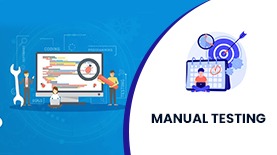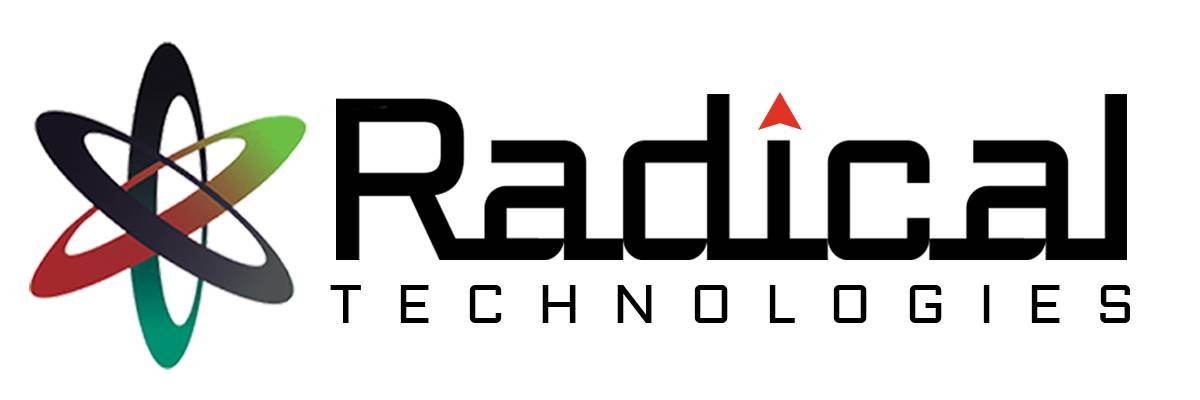- Home
- About Us
- Courses
- Combo Courses
- Programming Combo Courses
- Non Programming Combo Courses
- Linux & Cloud Combo
- Linux & DBA Combo
- AWS & Devops Combo
- Salesforce Combo
- Azure Admin Combo
- Azure Cloud & Azure Devops Combo
- Tableau Informatica Combo
- Power BI Informatica Combo
- Power BI & MSBI Combo
- Salesforce Manual Testing Combo
- Salesforce Tableau Combo
- Data Analytics Combo
- MCSA Azure Combo
- Powerplatform Combo
- ADF & Power BI Combo
- BA & Tableau Combo
- PG Diploma
- Online Schedule
- Offline schedule
- Job Openings
- Certifications
- Contact Us
MANUAL TESTING

Manual Testing is a structured process of evaluating software applications by human testers to ensure that they meet specified requirements and quality standards. Manual Testing is valuable for various reasons, including its adaptability to different testing scenarios, early-stage testing, and its ability to assess the user experience. However, it can be time-consuming and may not be practical for repetitive or large-scale testing efforts.
1777 Satisfied Learners
MANUAL TESTING TRAINING IN PUNE | ONLINE
Duration of Training : 40 hrs
Batch type : Weekdays/Weekends
Mode of Training : Classroom/Online/Corporate Training
Manual Testing Training & Certification in Pune
Highly Experienced Certified Trainer with 10+ yrs Exp. in Industry
Realtime Projects, Scenarios & Assignments
Why Radical Technologies
Introduction :
Manual testing helps discover and record any software bugs or discrepancies related to the functionality of the product. Manual testing can be replaced by test automation. It is possible to record and playback manual steps and write automated test script(s) using Test automation tools. Although, test automation tools will only help execute test scripts written primarily for executing a particular specification and functionality. Test automation tools lack the ability of decision-making and recording any unscripted discrepancies during program execution. It is recommended that one should perform manual testing of the entire product at least a couple of times before actually deciding to automate the more mundane activities of the product. Manual testing helps discover defects related to the usability testing and GUI testing area. While performing manual tests the software application can be validated whether it meets the various standards defined for effective and efficient usage and accessibility.
COURSE CONTENT :
Chapter 1 : Testing Fundamentals
What is testing?
Why is testing necessary?
Economics of Testing
Black Box Testing
White Box Testing
Software Testing Principles
STLC (Software Testing Life Cycle)
Chapter 2 : Testing throughout the software life cycle
Software Development models
Waterfall model
V – Model
Spiral model
Prototype model (RAD)
Agile methodology
Chapter 3 : Static Techniques
Reviews and the test process
Review Process
Inspections and Walkthroughs
Code Inspection
Chapter 4 : Test Design Techniques
Identifying test conditions and designing test cases
Categories of test design techniques
Specification-based or black-box techniques
Boundary Value Analysis
Decision Table Testing
Equivalence Partitioning
State Transition Testing
Use Case Testing
Structure-based or white-box techniques
Code Coverage
Decision Coverage
Statement Coverage
Structural Testing
Experience-based techniques
Error Guessing
Exploratory Testing
Choosing a test technique
Chapter 5 : Test Management
Test Organization
Test Plans, Estimates, and strategies
Test progress monitoring and control
Configuration Management
Risk and Testing
Incident Management
Chapter 6 : Other Testing Types
Function Testing
Volume Testing
Stress Testing
Usability Testing
Security Testing
Performance Testing
Configuration Testing
Reliability Testing
Recovery Testing
Chapter 7 : Introducing Quality Center
The Quality Center Testing Process
Starting Quality Center
The Quality Center Window
Chapter 8 : Specifying Releases and Cycles
Defining Releases and Cycles
Viewing Releases and Cycles
Chapter 9 : Specifying Requirements
Defining Requirements
Viewing Requirements
Modifying Requirements
Converting Requirements
Chapter 10 : Planning Tests
Developing a Test Plan Tree
Designing Test Steps
Copying Test Steps
Calling Tests with Parameters
Creating and Viewing Requirements Coverage
Chapter 11 : Running Tests
Defining Test Sets
Adding Tests to a Test Set
Scheduling Test Runs
Running Tests Manually
Viewing and Analyzing Test Results
Chapter 12 : Adding and Tracking Defects
How to Track Defects
Adding New Defects
Matching Defects
Updating Defects
Linking Defects to Tests
Creating Favorite Views
Most Probable Interview Questions for Manual Testing
Interview Question No. 1 for Manual Testing : Can you explain the difference between manual testing and automation testing?
Interview Question No. 2 for Manual Testing : What motivated you to pursue a career in manual testing?
Interview Question No. 3 for Manual Testing : How do you ensure thorough test coverage in manual testing?
Interview Question No. 4 for Manual Testing : Can you discuss a challenging bug you encountered during manual testing and how you resolved it?
Interview Question No. 5 for Manual Testing : What tools and techniques do you use for defect tracking in manual testing?
Interview Question No. 6 for Manual Testing : Describe your approach to creating effective test cases in manual testing.
Interview Question No. 7 for Manual Testing : How do you prioritize test cases in a manual testing project?
Interview Question No. 8 for Manual Testing : Can you share your experience with executing test cases in different environments during manual testing?
Interview Question No. 9 for Manual Testing : How do you handle regression testing in manual testing projects?
Interview Question No. 10 for Manual Testing : What strategies do you employ for exploratory testing in manual testing?
Interview Question No. 11 for Manual Testing : Have you worked with any specific software testing tools for manual testing? If so, which ones and how proficient are you with them?
Interview Question No. 12 for Manual Testing : How do you ensure the reliability and accuracy of manual testing results?
Interview Question No. 13 for Manual Testing : Can you discuss a scenario where you had to collaborate with developers during the manual testing process?
Interview Question No. 14 for Manual Testing : How do you communicate test results and findings to stakeholders in manual testing projects?
Interview Question No. 15 for Manual Testing : What steps do you take to adapt to changes in project requirements during manual testing?
Interview Question No. 16 for Manual Testing : How do you maintain documentation and reports for manual testing projects?
Interview Question No. 17 for Manual Testing : Can you explain your understanding of different testing methodologies used in manual testing?
Interview Question No. 18 for Manual Testing : How do you handle time constraints and prioritize tasks in manual testing projects?
Interview Question No. 19 for Manual Testing : Have you faced any challenges in coordinating with team members or managing conflicts during manual testing projects?
Interview Question No. 20 for Manual Testing : What steps do you take to stay updated with the latest trends and advancements in manual testing?
Learn Manual Testing – Course in Pune with Training, Certification & Guaranteed Job Placement Assistance!
Welcome to Radical Technologies, your premier institute in Pune for comprehensive manual testing courses and certifications. At Radical Technologies, we specialize in offering top-notch training and coaching in manual software testing to help individuals kickstart or advance their careers in the field of quality assurance.
With a focus on delivering high-quality education, our manual testing courses cover everything from fundamental testing concepts to advanced testing techniques, ensuring that students gain a solid understanding of manual testing principles and practices. Whether you’re a beginner looking to enter the world of software testing or a seasoned professional seeking to enhance your skills, our courses cater to learners of all levels.
Our expert instructors bring years of industry experience to the classroom, providing hands-on training and real-world insights that prepare students for success in the competitive job market. Through interactive classes, practical exercises, and real-world projects, we ensure that students develop the necessary skills and confidence to excel in manual testing roles.
At Radical Technologies, we understand the importance of practical learning, which is why our curriculum includes extensive practical exercises and case studies to reinforce theoretical concepts. Students have the opportunity to work with popular software testing tools for manual testing, gaining valuable experience that translates directly to the workplace.
In addition to offering classroom-based training, we also provide online manual testing courses, allowing students to learn at their own pace and convenience from anywhere in the world. Our online platform features comprehensive course materials, video lectures, and interactive quizzes to facilitate effective learning.
As part of our commitment to student success, we offer job placement assistance to help graduates secure rewarding positions in the field of manual testing. Our extensive network of industry contacts and partnerships with leading companies in Pune ensures that students have access to a wide range of job opportunities upon completing their training.
Whether you’re seeking a manual testing course in Pune or looking to enhance your skills through online training, Radical Technologies is your trusted partner for quality education and career advancement in manual software testing. Join us today and take the first step towards a rewarding career in the exciting field of software testing.
Find Manual Testing Course in other cities –
Online Batches Available for the Areas
Ambegaon Budruk | Aundh | Baner | Bavdhan Khurd | Bavdhan Budruk | Balewadi | Shivajinagar | Bibvewadi | Bhugaon | Bhukum | Dhankawadi | Dhanori | Dhayari | Erandwane | Fursungi | Ghorpadi | Hadapsar | Hingne Khurd | Karve Nagar | Kalas | Katraj | Khadki | Kharadi | Kondhwa | Koregaon Park | Kothrud | Lohagaon | Manjri | Markal | Mohammed Wadi | Mundhwa | Nanded | Parvati (Parvati Hill) | Panmala | Pashan | Pirangut | Shivane | Sus | Undri | Vishrantwadi | Vitthalwadi | Vadgaon Khurd | Vadgaon Budruk | Vadgaon Sheri | Wagholi | Wanwadi | Warje | Yerwada | Akurdi | Bhosari | Chakan | Charholi Budruk | Chikhli | Chimbali | Chinchwad | Dapodi | Dehu Road | Dighi | Dudulgaon | Hinjawadi | Kalewadi | Kasarwadi | Maan | Moshi | Phugewadi | Pimple Gurav | Pimple Nilakh | Pimple Saudagar | Pimpri | Ravet | Rahatani | Sangvi | Talawade | Tathawade | Thergaon | Wakad


